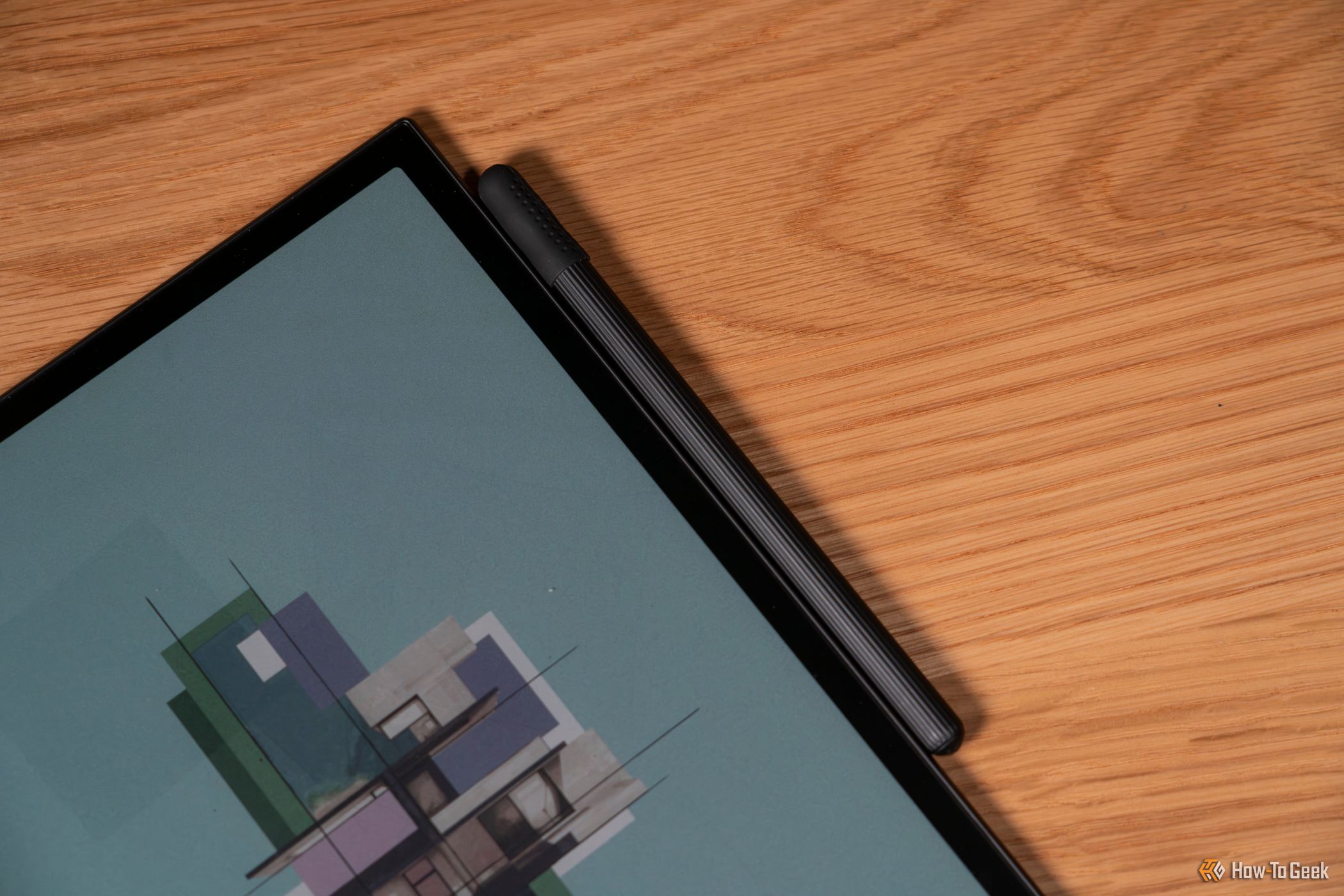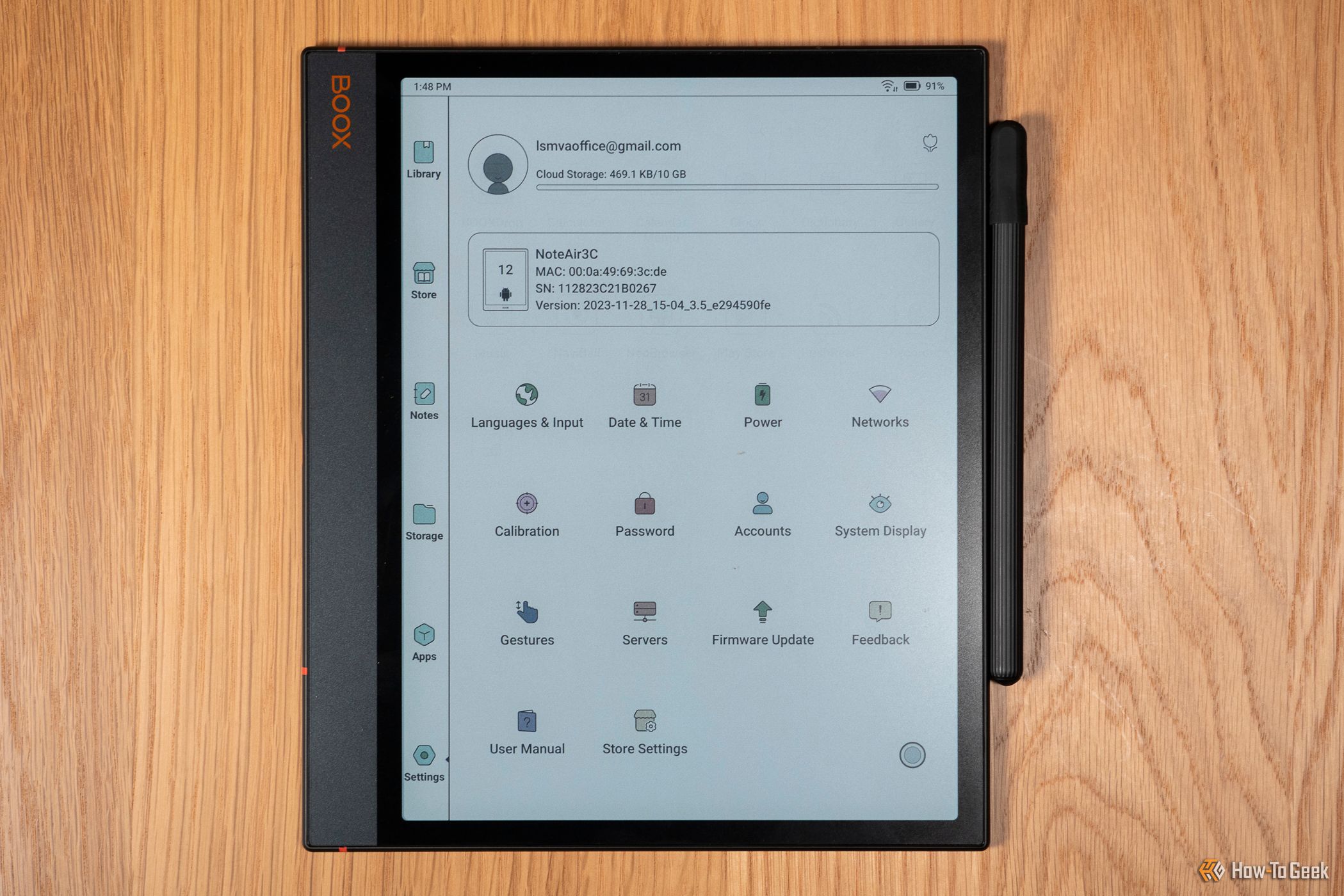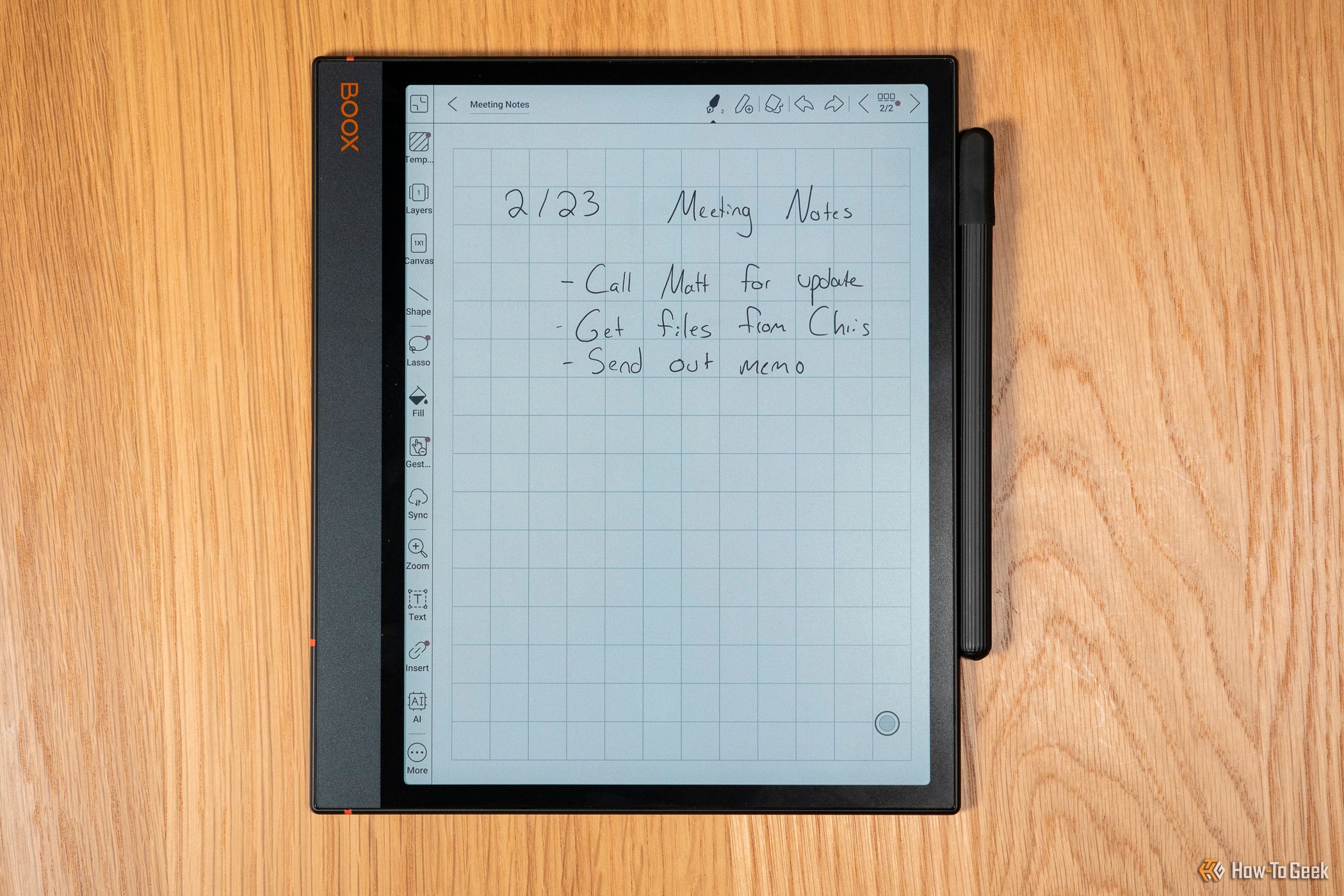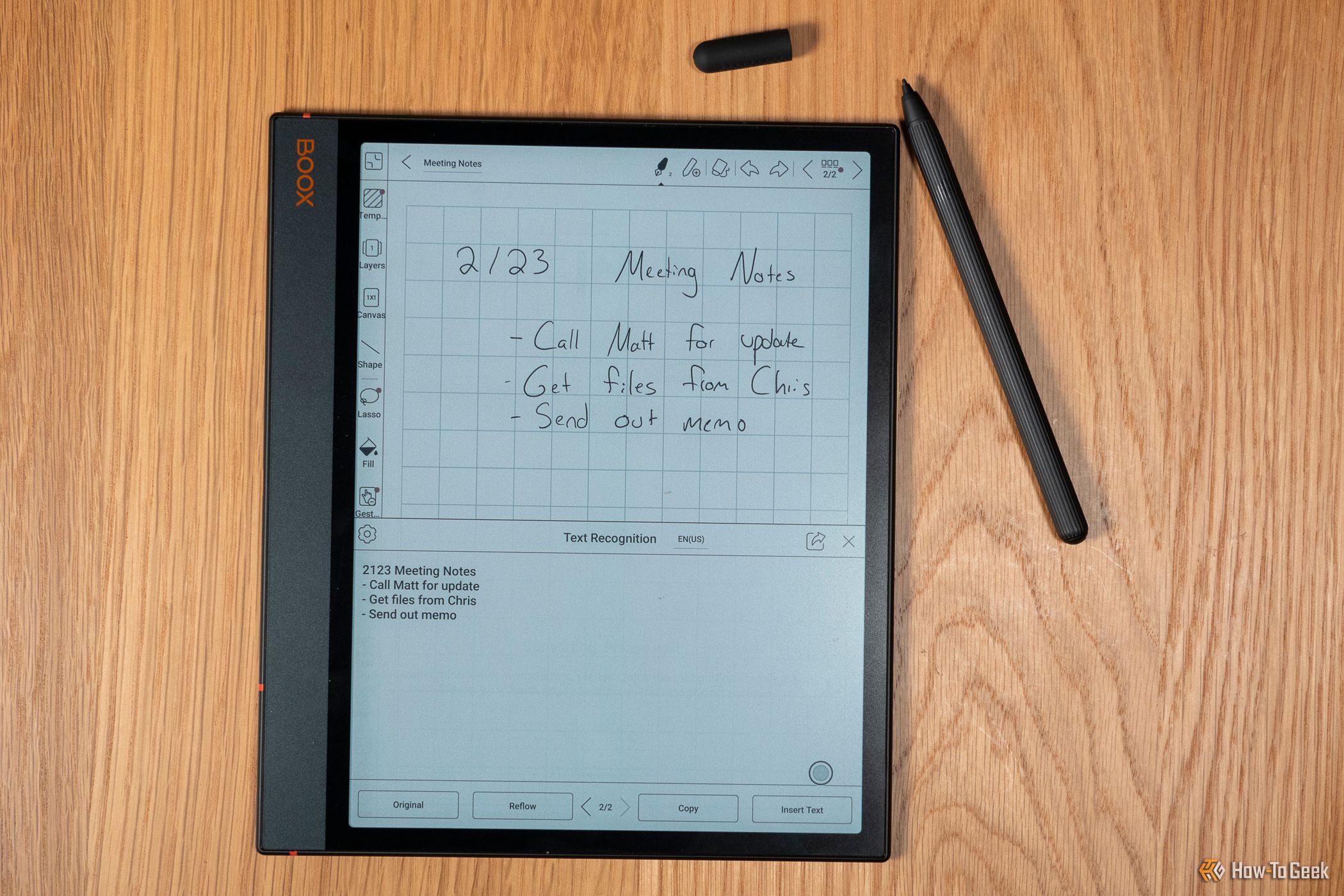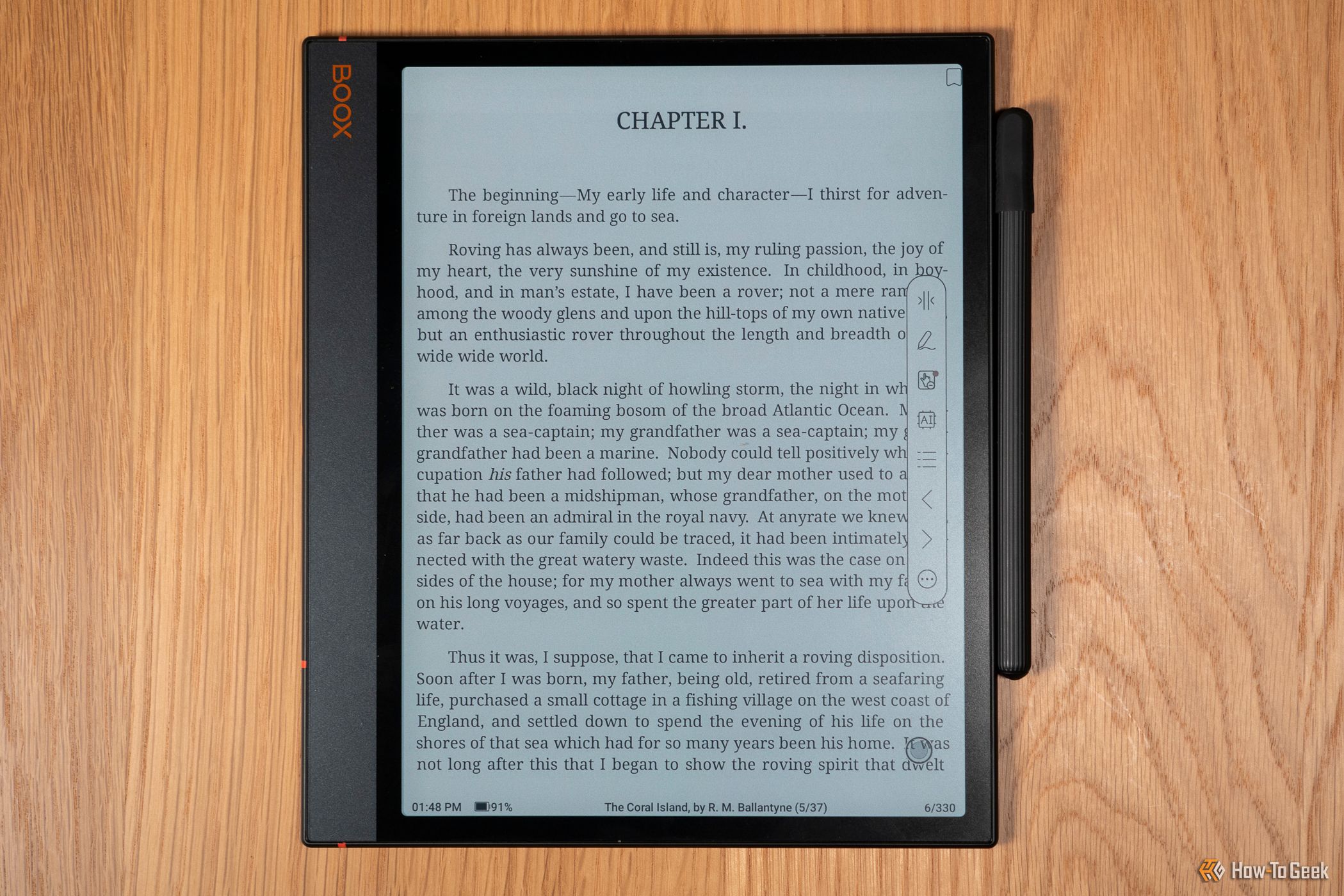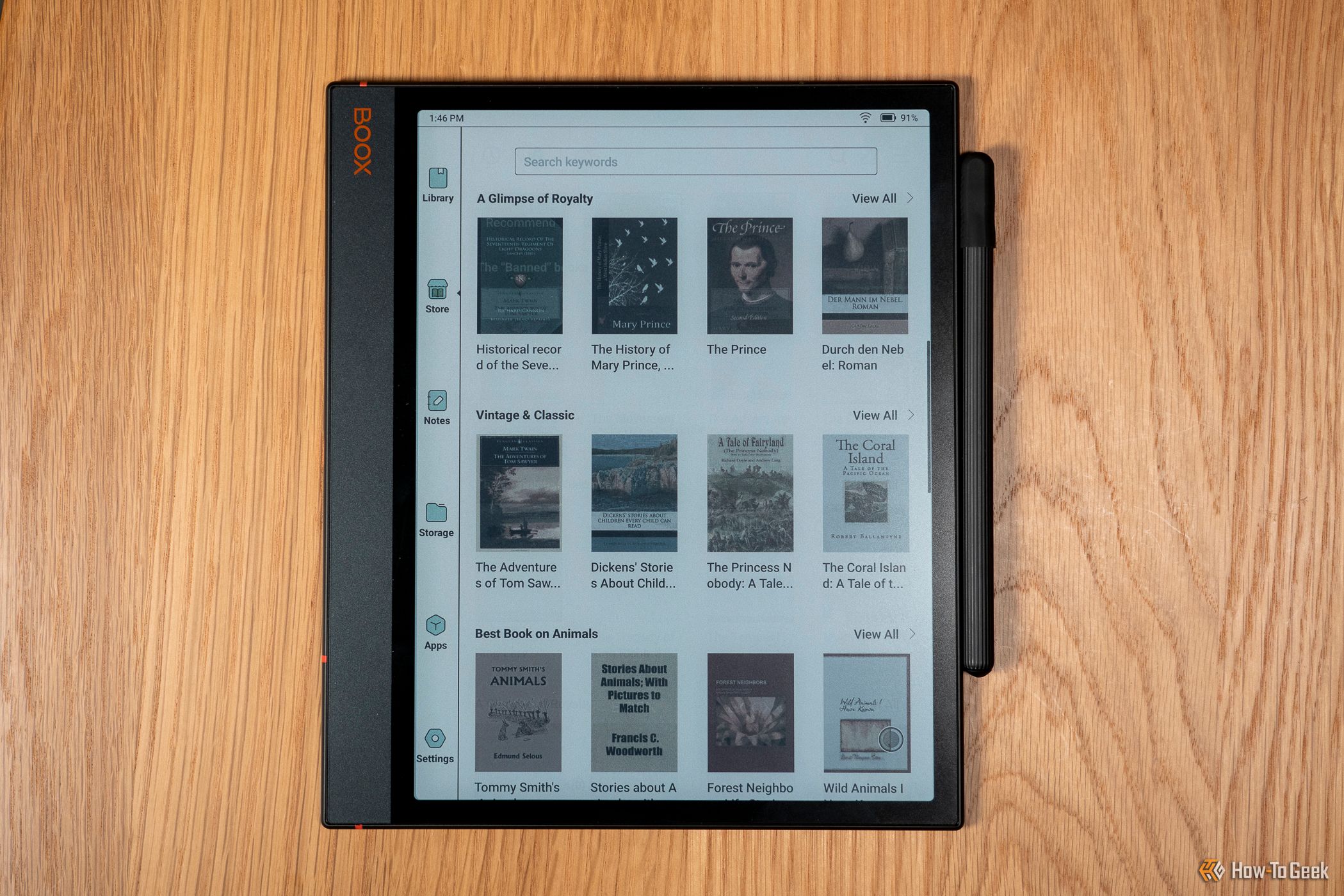Key Takeaways
- Long-lasting battery and colorful display make the Onyx Boox Note Air3 C ideal for reading and note-taking.
- Notebook mode offers excellent annotation capabilities, AI tools, and exporting options for enhanced productivity.
- Slow UI navigation and a weak speaker system may hinder the Onyx Boox Note Air3 C from serving as a versatile tablet.
As a follow-up to its Note Air2 and other eReaders like the Onyx Boox Page, the Onyx Boox Note Air3 C brings a colorful screen befitting of a versatile E Ink tablet that does more than display ebooks and take notes. You can use the Note Air3 C for other tasks, too, if you so wish—but the processing speed and weak speaker system might deter you from venturing too far outside the lines.
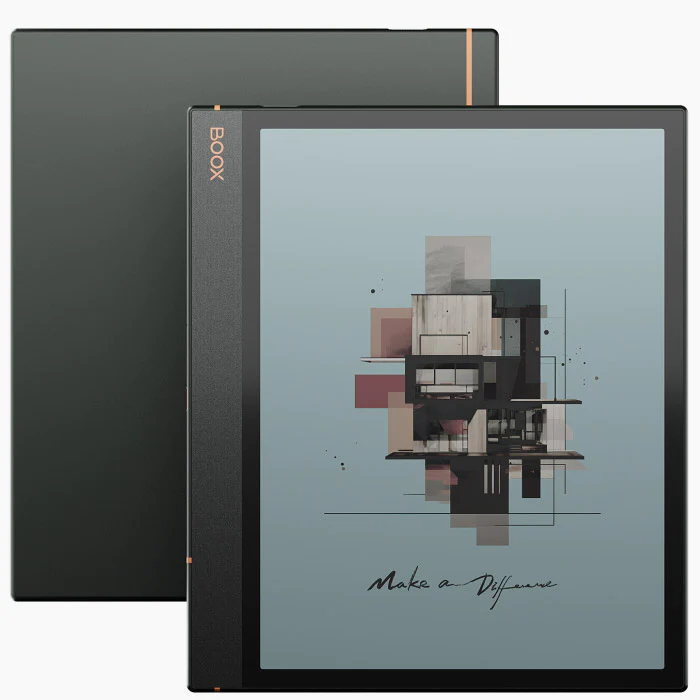

Onyx Boox Note Air3 C
The Onyx Boox Note Air3 C features a 10.3-inch display with a gorgeous blend of colors, plus notebook and annotation capabilities, a handy integrated recorder, and the ability to import ebooks you already own.
- Brand
- Boox
- CPU
- 2.4Ghz Octa-core + BSR
- Memory
- Flash Memory 64GB
- Operating System
- Android 12
- Battery
- 3,700mAh Li-ion Polymer
- Ports
- 1 x USB-C charging port, 1 x microSD Card Slot
- Display type
- 10.3-inch Kaleido 3 (4,096 colors) Carta 1200 glass screen with flat cover-lens
- Price
- $500
- Size
- 8.9 x 7.6 x 0.3in (226 x 193 x 5.8mm)
- Connectivity
- Wi-Fi (2.4GHz and 5GHz); Bluetooth 5.0
- Measurements
- 8.9 x 7.6 x 0.23in (226 x 193 x 5.8mm)
- Weight
- 15.2oz (430g)
- RAM
- 4GB LPDDR4X
- Resolution
- B/W: 2,480 x 1,860 (300ppi); Color: 1,240 x 930 (150ppi)
- Long-lasting battery life
- Color display that includes color temperature options
- Ability to import ebooks and sync Google Drive and Google Play
- Notebook function with annotation and recording tools built-in
- On ebook highlighting and annotation
- UI can feel slow and disorganized at times
- Boox ebook store has a sparse selection
- Speakers aren’t great
A Sleek Look and Feel
For any tablet or eReader, form is almost as important as function. You want a tablet to feel comfortable in your hand and easily portable, no matter if you’re traveling or making a quick trip to a coffee shop. I was pleased with the heft of the Boox Note Air3 C, which feels solid enough to take some accidental spills without being overtly clunky. Its weight is just 15.2 ounces (minus the cover and digital stylus), which means storing it in my purse or backpack never felt uncomfortably heavy for me. It also has a slim profile of just 0.23 inches, so it easily slid into zippered pockets like any notebook wood.
It’s lighter than the Boox Tab Ultra C Pro, but its design is similar. A sleek black aluminum frame with orange detailing throughout and a paper-like 10.3-inch screen. On the left edge is a thick gray strip with the Boox logo, while a black bezel surrounds the screen.
The power button is at the top edge, while the USB-C port for charging is on the device’s left edge. This side also contains the speakers and a microSD card slot. The back features more of the sleek matte black, which does prevent some fingerprint marks from appearing as obvious, and a thin orange stripe with the Boox “Note Air3 C” logo.
Performance: A UI Interface That’s Simple Enough but Has Limitations
With an Android 12 operating system, this tablet offers the best of both worlds. It makes an excellent alternative to a Kindle or Nook, for example, if you’re looking for something with extra features. However, because I found one of the best features to be ebook annotation and the notebook capabilities of the Boox Air3 C, I would compare it more readily to the Amazon Kindle Scribe.
I used the Boox Note Air3 C to browse the web, write notes for work and personal tasks, record a phone interview, and, of course, read. But while I could utilize other features, such as watching videos or downloading apps to run from Google Play (i.e., games, shopping apps, etc.), the Note Air3 C had two primary functions that obliterated all the rest—reading and note-taking. The other features might be helpful, but I don’t foresee most people utilizing them since they’re somewhat ancillary next to the Note Air3 C’s two main strengths. This is not to say I didn’t experiment—but the bottom line is I couldn’t use the Note Air3 C as a speedier, full-fledged tablet like other Android tablets, and thus, after determining this, I used it exclusively for reading, annotating, and note-taking.
I found the UI to be, despite its simplicity, somewhat clunky. The organization seemed logical for the most part, but then some settings were stashed away in illogical places. To switch between refresh modes (there are four: HD, Balanced, Fast, and Ultrafast) on the Boox Note Air3 C, for instance, I had to go to the Control Center. This first step made sense to me. But then I found these “Refresh Modes” stashed away under the “E Ink Center” option. As I expected, the “E Ink Center” houses color options and advanced color settings. Below all of this are the “Refresh Modes,” as though they were put there as an afterthought. It would’ve made more sense to place these in the Control Center as quick tab options or under the Power settings in the Settings tab.
My main gripe with the Boox Note AirC was its slowness. Although ghosting wasn’t distracting, it did get in the way of my note-taking on some occasions when I would erase a good chunk of handwritten text. Mainly, the transitional time it took to switch between pages or load a new notebook was (even in “Fast” mode) a bit too slow. If you’re used to eReaders, this may be something you’re accustomed to. If you expect a speedier tablet-like experience, though, I’d curb your expectations.
Meanwhile, one of the pros of the Note Air3 C was its storage. The 64GB of space was plenty of space to import documents, download ebooks, and maintain a healthy library of files at my fingertips, and I appreciated that Onyx included a microSD slot for memory expansion.
Notebook Mode: Annotation and Digital Scribing
Although I’m a proponent of that pen-to-paper feeling, that isn’t something I’ve found on electronic devices, but the Boox Note Air3 C replicated it as well as a tablet can. The tablet came with a large magnetic stylus that easily attached to the side of the device and looped well through the tab of the included cover, which is well-made but nothing to write home about. The lightweight pen was comfortable to grip, and it required no charging—I started writing straight out of the box. The writing pressure needed to use the stylus was similar to using a pencil or smooth-gliding ballpoint pen (not too soft, not too heavy), while the textured feel of the stylus to the screen felt satisfying, and even made a nice noise, if that sort of thing thrills you as it does me.
Tapping on the menu’s “Notes” tab, brought me to a screen dedicated to note-taking. The Boox Note Air3 C let me create several different types of notebook layouts, including ones that simulated lined or grid paper, as well as more kitschy task lists and other stylized notebooks of that ilk. I spent a lot of my time with the Boox Note Air3 C creating various notebooks for my work tasks.
The color and the display made note-taking feel less bland. The 10.3-inch E Ink Kaleido 3 screen is the same screen on the Tab Ultra C Pro, and its color depth is excellent for an eReader. In total, there’s support for over 4,000 colors and over 15 shades of gray. I was also sent the Boox Note Air3 (which costs $100 less), which doesn’t have a color display. Compared to the Air3 C, the Air3 feels less immersive and more like a standard eReader, with plenty of shades of gray, but no colored covers or varying shades for drawing or notes beyond lighter or darker grays.
Features that made note-taking less basic, such as different pen types (pencil, pen, marker, crayon, paintbrush) and fun color options like light pink, sage green, and aqua blue, were highlights for me. I stored five different pen colors (the max allowed) at once to make my notes pop. However, when switching between specific colors, I noticed a delay in the correct color conversion. For some reason, while writing in purple (grape), it would appear light pink until I switched pens again, which would then cause the text to turn to the correct color. This wasn’t a problem, but an odd glitch to point out, nonetheless.
Other features, such as AI tools like text recognition, worked well even with messy handwriting, and while it wasn’t perfect, it was useful enough for the average note-taker. AI strikethrough to erase was also a favorite of mine since this meant I didn’t have to lift the pen to tap the eraser button and then switch back to the pen after erasing.
And exporting my notepads (or single pages) was a game-changer, since I could convert them to PDFs and send them to my computer or Google Drive. I also synced a notebook to the Kindle app (which I downloaded via Google Play) and used Quick Share and Bluetooth to transfer files from the device.
Adding individual text boxes, timestamps, and other features ramped up my note-taking, while the coolest of all extras was the ability to insert a recording and record while note-taking. I often conduct interviews, so having a recording and my notes from the interview in one place is fantastic. It reminded me of when I was in college, and I bought a smart pen (new tech at the time) that recorded my lectures while I took notes and would sync my writing with the recording. I did utilize this recording feature for such an occasion, and while it did record the entirety of the conversation, listening back on the speaker system of the Boox Note Air3 C was less than impressive. And there wasn’t a way to sync up a recording to specific note-taking points, either. (To be fair, smart notebooks exist, which may be a good alternative for someone with these particular needs.)
But I digress. The speaker system’s sound was not only quiet (even at full volume), but it also sounded quite compressed. The volume was unsatisfying for me. I chose, instead, to listen to those recordings via my Bluetooth headphones, which was far easier than craning to hear the low-volume speaker.
Reading With The Boox Note Air3 C
Most people may come to the Boox Note Air3 C for reading, and the device does well here. I read a few titles I downloaded from the Boox Store, but the inventory in the store was small and seemed only to feature titles available through Project Gutenberg. One such title I picked for a quick meander was Henry David Thoreau’s “Walden,” which I’ve read before.
When reading at night, I appreciated the color temperature bar and its amber light when swiped all the way to the right. The amber light lessened the load on my tired eyes, which day-in, day-out stare at screens for hours on end, and can get quite dry. In the daytime, the display was always bright, clear, and easy to read, with an authentic paper-like look when reading in the sunlight.
Despite the low stock in the Boox Book Store, I downloaded other eReader apps through the Google Play App, including the Kindle app and Play Books, plus Audible for audiobook listening. All of these apps performed well on the Note Air3 C, whether I was reading H.G. Wells’ “The Invisible Man” via Play Books, looking for recipes in one of my cookbook ebooks on Kindle, or listening to one of my in-progress audiobooks. As noted before, however, audiobook listening (or any listening) works best on the Note Air3 C if you use wireless earbuds or a pair of wired earbuds plugged into the USB-C port—otherwise, the speaker system is too low and squashy.
Perhaps the most useful feature for reading, especially for students or avid annotators, was the ability to highlight passages, add annotations, and write on the ebook. I did so as I pleased, but some features weren’t compatible with the Kindle app (specifically, writing on ebooks). All features seemed to work on other ebooks through Play Books, and anything through the Boox Book Store.
Good Battery Life, Standard Charging
I used the Note Air3 C moderately, and the battery life lasted about a week. I also had settings for the screen to stay on for 30 minutes without switching to the screensaver. This was more convenient for work purposes, when I would go some time between note-taking, but didn’t want to wake the Note Air3 C from sleep every time I needed to write something down. The average drain percentage (including times when it wasn’t in use and left on sleep) was about 5 to 10% per day. On days when I used it more heavily, I needed to charge it closer to every four to five days.
The charging time was not long. On average, the battery gained about 0.34% per minute, or 20% per hour. Consistently, it took about 3 to 4 hours to charge.
Should You Buy the Boox Air3 C Tablet?
The Onyx Boox Note Air3 C is one of the most interesting options for someone who wants an eReader that allows for note-taking, importing and exporting notebooks and files, and annotating ebooks. With other helpful features, like a built-in recorder tool, a colorful display, and a lightweight, sturdy build, it makes a brilliant work companion for students and professionals who need to keep track of passages in books or create notes that stay in one place.
At $500, you get more than just an eReader, but it isn’t quite a full-fledged tablet experience compared to what Apple or Samsung offer. Any user who likes to read ebooks would find little fault with its eReader capabilities, but if you’re expecting a speedy tablet with a better speaker system, I’d suggest opting for something like the Samsung Galaxy Tab S9. If you’re in the market for a digital notebook and eReader, though, this might be the best choice for you.


Onyx Boox Note Air3 C
The Onyx Boox Note Air3 C features a 10.3-inch display with a gorgeous blend of colors, plus notebook and annotation capabilities, a handy integrated recorder, and the ability to import ebooks you already own.


